THE NEED FOR UNDERSTANDING
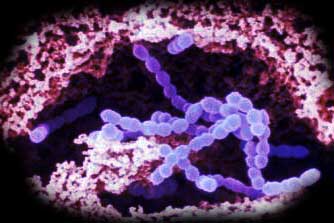
Streptococcus salivarius
There is a need for a deeper understanding and appreciation of the processes on a molecular level of pathogens and cellular interface in the human body which will allow for more sophisticated precision corrective approaches, without destroying the system in the process.
One promising method as a corrective measure for disrupted balances will be incorporation of probiotics with balanced nutrition. Probiotics can by used for prevention and treatment of the body where microbiota plays a role in the maintenance of physiological homeostasis. The example used for illustrating this method will be the naturally existing in human mouth bacteria, Streptococcus Salivarius. The more potent strain of S. Salivarius named BLIS-K12 was discovered and isolated by renowned microbiologist professor John Tagg at the University of Otago in New Zealand. It was noted that only 2% of human population have that strain of S. Salivarius in sufficient amounts which makes them healthier and less susceptible to bacterial infections, specifically strep throat.

Pseudomonas Aeruginosa
Strep throat infections are the leading cause for rheumatic fever which causes permanent heart damage. BLIS-K12 produces natural bacteriocines, responsible for fighting pathogenic bacteria which cause sore throats, colds, flu, and ear infections. It primes the immune system, controls bad breath and restores healthy balance by suppressing the overgrowth of pathogens. (Journal of Applied Microbiology April 2006).
Similar strategies to eliminate competition are common among pathological strains of bacteria. Pseudomonas Aeruginosa, aerobic rod, can also easily grow without oxygen. This opportunistic pathogen can form colonies of bio-film in a variety of settings like body organs, skin wounds, gum disease, and medical devices including dental implants. Lately it has become the dominating pathogen of clinical relevance in hospital settings. The planktonic form of P. Aeruginosa is most vigorous and fast-swimming, propelled by single flagella. The reason for its dominance and wide spread as an infectious agent is that it relies on its strategy of gene expression by producing toxic proteins which attack and break down the cell walls of competing bacteria while protecting itself with a specific protein capable of neutralizing this destructive toxin.
The balance between health and pathology is relying on numbers of inhibitory strains of naturally colonizing oral bacteria capable of competing with pathogens and ultimately taking over its environment.
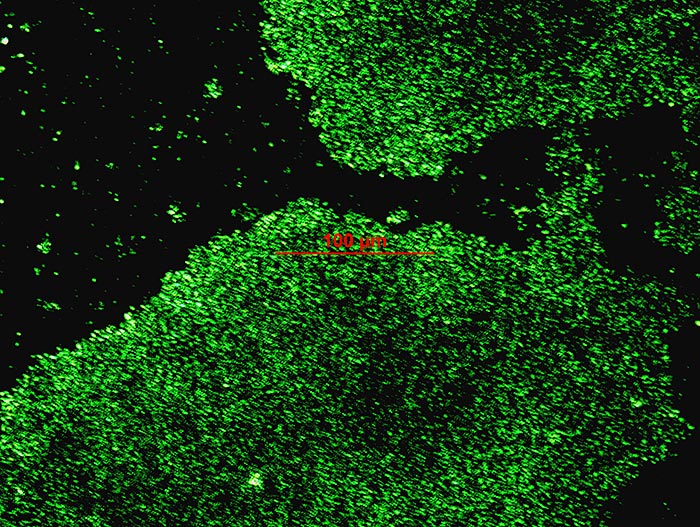
Clusters of Hillman group bacteria: S. Oralis KJ3, S. Uberis KJ2, S. Ratus JH 145. Practical application in guided pocket regeneration.
ProBiota3® was developed by Organics chief scientist Jeffrey Hillman DMD, PhD. Based on his extensive study of oral biology, Dr. Hillman was able to recognize and isolate low acid producing strains of three bacteria from streptococcus group naturally present in a healthy mouth: S. Oralis KJ3, S. Uberis KJ2, and S. Rattus JH145.They are actively competing with S. Mutans and are capable of colonizing the areas of sub-gingival sulcus, a normal habitat of S. Mutans. Two of the three, S. Oralis and S. Uberis produce low doses of hydrogen-peroxide which will oxidize the gum sulcus, creating an environment not suitable for anaerobic pathogens, the extra benefit from the presence of hydrogen-peroxide will be fresh breath and whiter teeth acquired naturally.
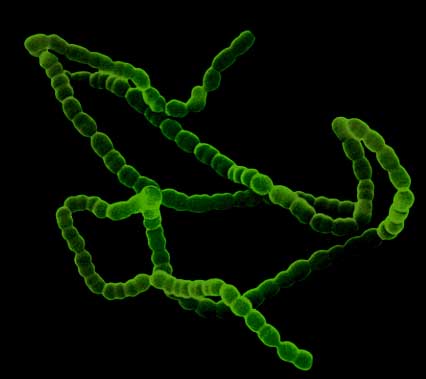
Streptococcus mutans
Remember Dr. Rosenow’s observation that anaerobic pathogens are sensitive to changes of partial pressure of oxygen in their environment. This makes those two strains of bacteria natural antagonists which, by oxygenating the terrain, will eliminate the pathogen and allow the body to initiate the healing process. The ultimate goal in treatment of periodontal disease by the means of probiotics will be the elimination of pathological strains of bacteria from their natural habitat of periodontal sulcus and the permanent replacement of them with non-infectious strains of bacteria from the group of streptococcus developed by Dr. Hillman.
At this stage there is a need to provide empirical evidence that this bacteria will colonize and maintain its presence in the habitat of periodontal sulkus permanently. Featured in Academia News, Nov.18, 2011 a microbiologist Wenyuan Shi at the UCLA School of Dentistry developed a highly successful mouthwash which targets the harmful Streptococcus Mutans bacteria which is a primary cause for tooth decay and cavities. The STAMP C16G2 (specifically targeted antimicrobial peptides) investigational drug, tested in clinical study is disrupting the cell membrane which allows the small molecules to leak off the cell, which is followed by loss of membrane potential and death of the cell. The action is selective only to cariogenic pathogens of S. Mutans and does not affect other non-cariogenic Streptococci. The action of a single application of the mouthwash remains effective for an extended period of time. “With this new antimicrobial technology, we have the prospect of actually wiping out the tooth decay in our lifetime,” said Shi, who noted that this work may lay the foundation for developing additional target-specific “smart bomb” antimicrobials to combat other diseases. It will be interesting to see how the $70 billion Dental Industry will react to this patent!
SCIENCE OF COLLOIDAL SUSPENSION
In order to maintain cellular integrity, the osmotic pressure has to be equal inside the cell and outside the cell. In any space the number of cations must equal the number of anions to maintain electrical equilibrium. Extra cellular fluid resembles sea water in ionic composition with the major cation being Na+ and major anion Cl-. There is a constant flow back and forth of intercellural-inerstital fluid and plasma of the blood vessel. We removed our bodies from the ocean, but we cannot remove the ocean from our bodies.
Whenever you are thirsty and take a drink of water, you are actually rebalancing the fluid chemistry everywhere in your inner ocean. It is a continual cycle of maintaining homeostasis; your ocean is teeming with life and has to be able to support it. 75% of your body mass is represented by water approximately 52 l. for 70 kg. male. It is stored in two major compartments: intracellular (within the cells) which constitutes 2/3 of the water which equals 33 l., and extracellular (outside the cell) which contains the remaining 1/3 of the water which equals 19 l. Extracellular compartments consist of interstitial (between the cells) storing 14 l., plasma 3.5 l., lymph 1.5 l. All water in the body is in the form of colloidal suspension (colloid that has continuous liquid phase in which solid is suspended).
The water in the body is constantly exchanged and recycled. It is interesting to know the quantity of water is exchanged between various parts of the body, the kidney processes about 180 l/day, lymph flow amounts to1-2.5 l/day, saliva about 8 l/day, turn over in the bowel 8-9 l/day, and amount of water which diffuses in both direction through capillary wall amounts to staggering 80,000 l/day.
The watery compartments are separated from each other by semipermeable membrane (selectively permeable to some molecules, not to all molecules). My first encounter with semipermeable membranes was in my physics class in second year in high school. We conducted an experiment with the glass jar divided by a semipermeable membrane into two equal compartments. When filled with water, the water level remained equal on both sides of the membrane. For this presentation when facing the jar we will name the left and right hand chamber. When I placed in the right hand chamber baking soda, the level of water in the right chamber dramatically rose and in the left chamber the water level proportionally dropped down. The conclusion drawn from this empirical observation is that in the glass jar after the introduction of baking soda to the right chamber, we realized a force that is stronger than gravity. 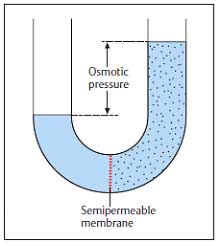
This invisible force capable of holding water on different levels in the same glass jar against the forces of gravity is a major life force of the aquatic world of the human body called osmotic pressure. This is the major force among others responsible for moving that 80,000 l. of water back and forth through capillaries. So when we originally place water in the glass jar, the water stayed level and was isotonic (equal osmotic pressure). Then when we added sodium bicarbonate to the right side, the water became a hypertonic solution (contained a high concentration of solute relative to water in the left chamber which become hypotonic solution, low concentration of solute). Because the membrane will not allow the solute, in our case sodium bicarbonate, to diffuse to the left chamber which would equalize the osmotic pressure, the water that can pass through the membrane will flow from left to right side, from low to high concentration, from hypotonic concentration to hypertonic concentration.
This is one of the fundamental laws of physics which plays a major role in physiology and chemistry at the cellular and bacterial level. This information will help us explain the basic principals of the “Keyes Method” of non-surgical control of periodontal disease. Dr. Keyes developed his method at the National Institute of Dental Research. The documented evidence to control periodontal disease by his method, presented in his work was so amazing, that you would think that every dentist would be using this technique. The facts are that only less than 1% of dentists follow his method. One of the statements by Dr. Keyes which explains this low rate of acceptance for his method by his peers was blamed on education, “The microbiology course in most dental schools is so superficial and irrelevant, that it’s worthless.”
The method is based on two household products sodium bicarbonate (baking soda) and hydrogen peroxide. Hydrogen peroxide has two atoms of hydrogen and two atoms of oxygen H-O-O-H or H2O2 will readily break down to water and oxygen: 2H2O2– 2H2O+O2 and sodium bicarbonate NaHCO3. When you combine hydrogen peroxide and baking soda the following will happen H2O2 + NaHCO3= NaOH (sodium hydroxide) + H2O (water) + CO2 (carbon dioxide) + ½ O2 (oxygen), also in presence of water (saliva) NaHCO3 will break down to Na(+) sodium and bicarbonate ions HCO3(-). Realized carbon dioxide and oxygen are responsible for micro-bubblization foaming action (effervescence) which mechanically loosens up the food particles and the viscosity of the meniscus of periodontal pocket. Some of available oxygen will dissolve in cervicular tissue fluid, increasing the overall partial pressure of oxygen in the area. Plus free oxygen will kill anaerobe bacteria on contact. (Dr. Rosenow: anaerobe bacteria are sensitive to partial pressure of oxygen).
On the other hand, high concentrations of sodium and bicarbonate ions in the area of gum sulcus make for a hypertonic solution that will desiccate bacterium and kill them (bacteria cellular wall is a semi-permeable membrane) by drawing water from their cytoplasm. This is an effective antimicrobial system directed against anaerobic bacterium and partially to any bacterium through desiccation.
The simplest way to master teeth brushing with peroxide/baking soda: dip the brush into peroxide, with the wet brush scoop some baking soda powder, and brush your teeth with vertical stroke for one minute per quadrant; you have to replenish your brush for each quadrant.
In Europe after the war there were shortages of basic hygiene products so we as kids were forced by parents to brush our teeth with baking soda/peroxide or salt. I remember we hated the procedure because it tasted badly, but with time we got used to it, and actually it was refreshing. There were some concerns from patients that peroxide (3%) may be carcinogenic to tissues. When you pay close attention to the chemical reactions you will see that when you start with a minute amount of peroxide, it rapidly reacts with baking soda on your brush, so actually you are exposing yourself to carbon dioxide, oxygen and water, three major components in our body. You breathe in oxygen, exhale carbon dioxide and drink water, plus there are ions of sodium and bicarbonate which are abundant in body water compartments.
TREATMENT FOR PERIODONTAL DISEASE
Our emphasis for treatment and maintenance of periodontal disease is oriented to “guided pocket recolonization” by means of “probiotics”, the term first introduced by Lilly and Stillwel, defined as “a live microbial supplement with beneficiary effect for the host.”
Probiotics can help prevent and treat diseases through several mechanisms:
1) Direct interaction: Probiotics interact directly with disease-causing microbes, making it harder for them to cause pathology.
2) Competitive exclusion: Beneficial microbes directly compete with the disease developing bacteria for nutrition and adhesion sites.
3) Modulation of host immune response: Probiotics interact and strengthen the immune system and help prevent disease development.
The growing resistance to a wide range of antibiotics by some important pathogens has raised the possibility of returning to the pre-antibiotic dark ages. The war on bacteria with antibiotics, like any human war, is slowly turning in favor of the bacteria; the prevailing treatment of non-specific is fading in to a more specific approach. Time has come to shift the paradigm from non-specific bacteria elimination to altering bacterial ecology by probiotics. Nara et al. demonstrated that lactobacillus helveticus is able to release the short chain peptides which will stimulate osteoblasts to promote bone formation.
We already know bacterium from the bio-film of periodontal pockets does exactly the opposite, it sends signals to osteoclasts to promote bone resorption. This is another example of the duality of nature which oscillates at the extreme ends of equilibrium.
It is critical to establish good periodontal health for attaining good systemic health. From what has been presented it is obvious that periodontal infection is a continuum from innocent spark to the wildfire which will consume everything if not stopped. It is easy to blow out the match, but if this is not done the consequences can be catastrophic. Therefore it is of utmost importance to find out if your periodontal match has already sparked. You owe it to yourself to find this out, and if you are diagnosed positive, the probiotics are a promising, safe, natural and side-effect-free option.


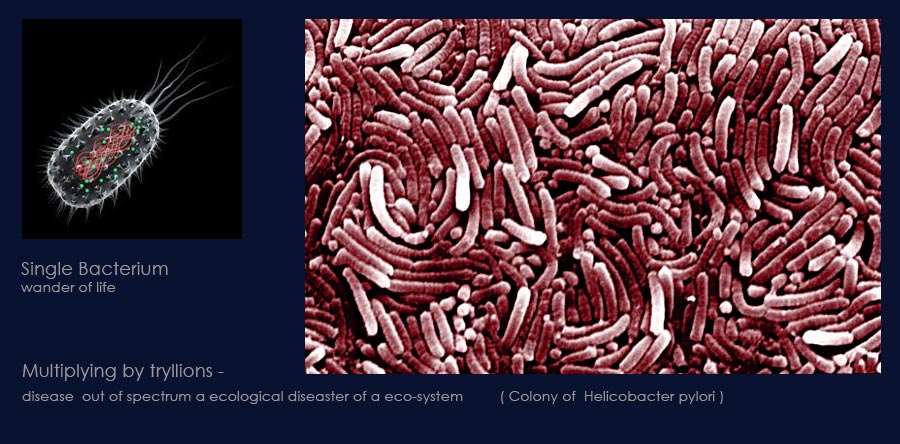
Advances in comprehension of biological processes give us the ability to employ these friendly bacteria as nano soldiers in combating periodontal disease. The treatment is based on diagnosis of bacteriological components of pathology through enzymatic tests, radiographic assessment of alveolar bone condition through digital panoramic survey, clinical evaluation, periodontal charting, six points measurement for every tooth to establish pocket depth and the status of the disease, microscopic evaluation of the specimen from the gum sulcus, fluorescent assessment of bacteria and proteins from ultraviolet to near infrared wave length, and the pH of saliva.
We have an array of agents in our armament to combat periodontal disease with various degree of effectiveness. The selection of modality has to be based on a profound understanding of anatomy, physiology, microbiology and effects of bio-film formation introduced by pathogens to the architecture of periodontal sulcus. The genetically controlled survival skills of the pathogen combined with its intimate familiarity with the terrain of periodontium allowing the microbes to entrench themselves and create an impenetrable barrier which successfully protects the pathogen and renders most of our therapeutic agents ineffective or simply useless. It is becoming obvious that we are missing the significant part of the equation, namely the delivery system capable of precisely placing sufficient amounts of selective therapeutic agents capable of penetrating the defenses for a sufficient amount of time, against the outflow of cervicular fluid to affect desired therapeutic outcomes.
The semi elastic perio-trays system cleared by FDA as medical device is a proven method which is capable of delivering the medication to the bottom of the sulcus or periodontal pocket. The therapeutic used with this system is a hydrogen-peroxide base gel in combination with syrup base doxycyline in sub-biological concentration acting in the system as messenger carrier, shutting off the osteoclastic (bone resorbing) activity and activating the osteoblast to new bone formation. The system is designed as home care to be used on a daily basis for 25 minutes per session. The continuous use of the system is unloading the burden from the immune system, freeing the resources, and making them available to combat other chronic infections in the body. Patients report general improvements in their health, and in some cases radiographic evidence of bone regeneration.
For those of you who get this far, I say, thank you for reading and sharing this information, nothing is accidental, there is always reason for everything. The consequences of today are determined by the actions of yesterday. To change your tomorrow, alter your decision today, and please remember take care of your body, as this is the only place you have to live in.

VALLEY:
Symbol of fertility; place for the development of all creation; symbol of life it self, mystic abode of shepherd and priest; sheltering the feminine aspects; peaceful and restful area after crossing the mountain; place to settle down and start the family.
